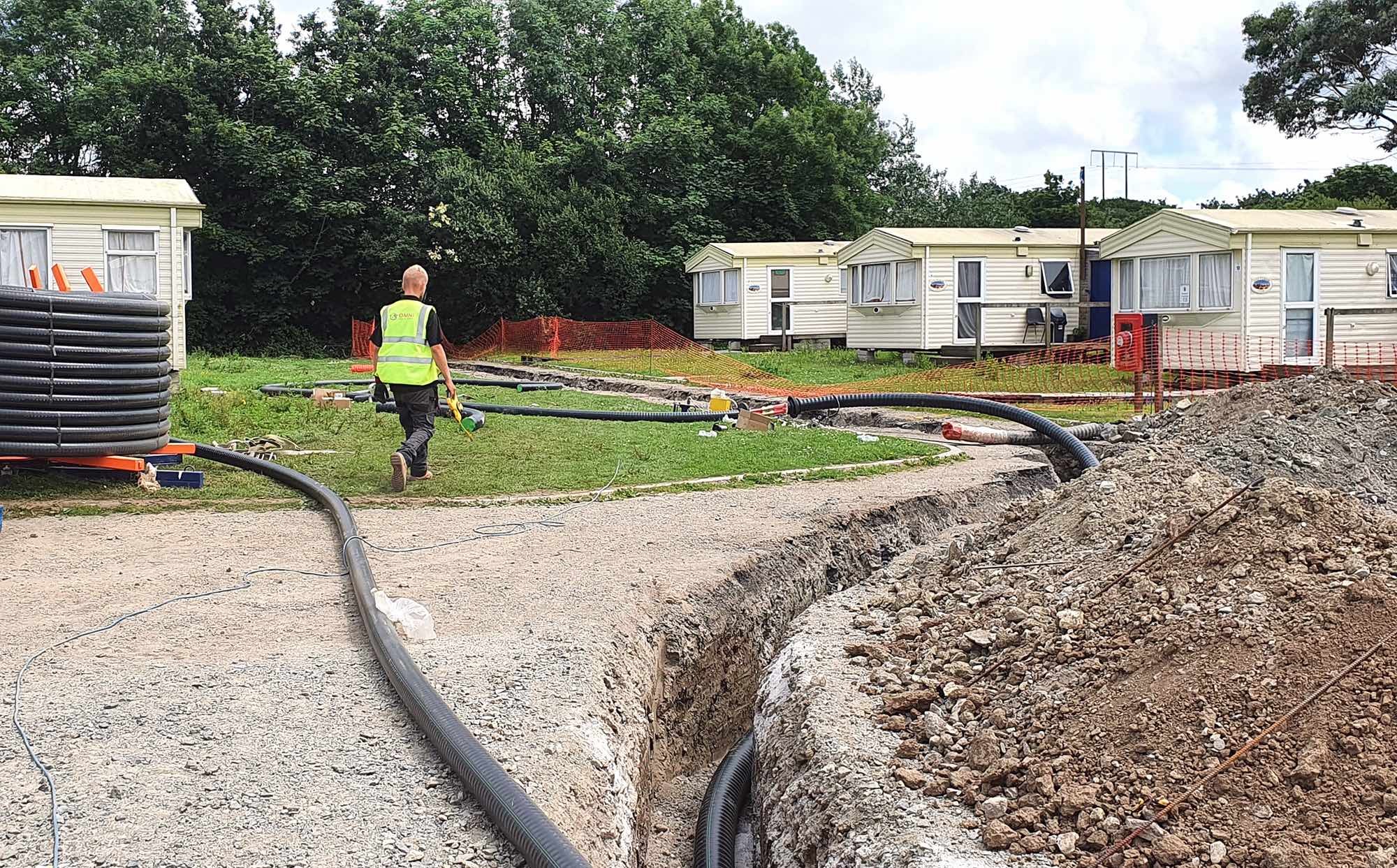28 October 2021
|
The first installation of Carrier’s AquaForce® 61XW large-scale heat pump in the UK is providing low-cost renewable cooling and heating for one of the country’s leading vegetable producers.
The system will save the vegetable producer between £120,000 and £150,000 a year in heating costs, with payback anticipated within two to three years with support from the Renewable Heat Incentive scheme, while significantly reducing its carbon footprint. The project was designed and installed by OMNI Heat and Power Ltd. and solutions such as the AquaForce 61XW support Carrier’s aim of reducing customers' carbon footprint by more than 1 gigaton, part of its 2030 Environmental, Social & Governance (ESG) Goals.
The client operates a large cold store and packing facility on its Cornwall estate with 70 static caravans for seasonal workers. Previously, the cold store was cooled by a traditional air-cooled chiller with individual liquid propane gas (LPG) powered boilers providing heating and hot water for accommodation and offices. The existing LPG system was expensive to run, while significant energy was being wasted through heat rejected by the chiller.
Design
The company commissioned OMNI Heat and Power to design and install a less-expensive-to-run and more environmentally responsible solution, based on low-carbon renewable energy and harnessing waste heat.
“The very wide temperature range, spanning -5 deg C for the cold store to 55 deg C for domestic hot water presented a particular challenge,” said Bradley Martin, director of OMNI Heat and Power. “Few heat pumps can cater for this while maintaining efficiency, and we were delighted to discover the Carrier 61XW, which offers this capability.
“We worked closely with Carrier to develop the system design. The company provided excellent support throughout the project, including detailed breakdowns of comparative performance and projections of energy and cost savings,” added Martin.
The solution uses the Carrier AquaForce 61XW heat pump to harness low-grade heat from ground-loops buried in the soil, plus ‘waste’ heat from the cold store refrigeration system, and upgrades it to useful temperatures. Hot water generated is piped to accommodation facilities and offices via a mini district heating system, providing comfort heating and hot water for washing. Power for the heat pump is provided by a large photovoltaic array, which supplies up to 1.5MW of electricity. This makes the facility almost totally self-sufficient in energy, further reducing carbon emissions.
“We see huge potential for this solution in agriculture, where there is often a need for cooling for produce alongside heating for seasonal workers and offices. The Carrier system is unique in being able to cater for this diverse requirement,” said Martin. “Beyond this project, there is also an opportunity for use in applications such as large hotels, which often have a requirement for simultaneous heating and cooling. A heat pump linked to four-pipe fan coils, for example, can capture heat from where it is not wanted within the building and deliver it to rooms, as needed, dramatically reducing heating and cooling costs for hotel operators.”









